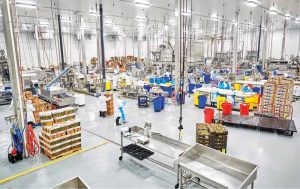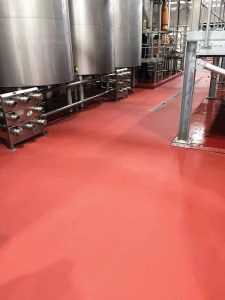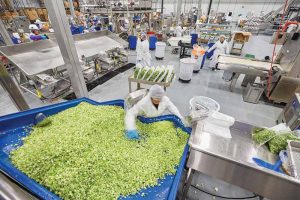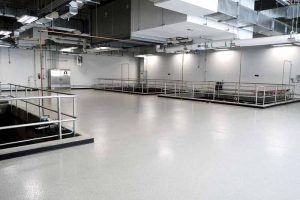
By Mark Merrifield
Any contractor hired to apply a floor coating wants to ensure a few important characteristics about the concrete substrate which will support the flooring. This includes confirming the concrete is structurally sound, free of contaminants, and properly prepared for the applied flooring system to bond to it securely for the long-term. Any deficiency remaining or developing in the concrete can telegraph upward to the floor coating over time and cause it to fail. The flooring itself must be able to withstand any foreseeable impacts, spills, and heavy traffic. All these factors are important to consider for a space before selecting the right floor coating.

Specifiers often recommend a monolithic resinous floor coating surface because it offers a seamless appearance appropriate for most spaces (Figure 1). Monolithic resinous floors eliminate grout lines and seams and are easy to sanitize and keep clean, especially in corners and other obscure places—making it hard for bacteria to harbor and grow there. However, even when pouring a monolithic floor, failures are possible. When floor coatings fail to live up to their intended use, the fault most often lies at the beginning, with improper surface preparation.
Monolithic floor coatings and concrete
Monolithic floor coatings are versatile options used in numerous industries, including food and beverage (Figure 2), pharmaceutical, industrial (Figure 3), commercial, retail, and hospitality. Such coatings are long-lasting and offer aesthetics in part because the floors have no grout joints or seams in which water, contaminants, or chemicals can penetrate and work their way under the flooring, which would cause it to lift from the concrete substrate. Seamless monolithic floors are also durable; resistant to impact, abrasion, and chemicals; and easy to sanitize, which further enhances facility cleanliness.

Concrete is extremely dynamic and rarely the same in every project. The reasons for this vary depending on the cement content, angularity of the aggregate components, and use of different admixtures, such as air entrainers and water reducers. It is important for contractors to understand how these factors affect the condition of concrete, so they can handle the most important step of any resinous floor coating system installation, which is proper surface preparation.

While most floor coatings are applied directly to concrete (Figure 4, page 2), they may also be applied over existing tile or dairy brick, provided those substrates are tightly adhered to the concrete, with no hollow spots underneath. Regardless of the substrate, it is imperative to properly prepare the surface before installing a resinous floor coating on top. Unfortunately, improper surface preparation remains the most common reason for coating failures. Sometimes it results from faulty workmanship, inexperience, or an installer not following specifications. Most often, the only way to fix these failures is to completely remove the floor coatings and start over.




